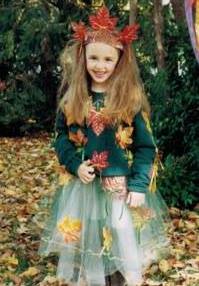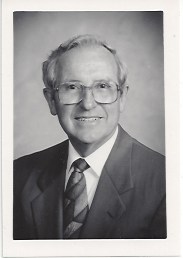Jan Henderson is from Bay Village, Ohio and currently lives in Westlake where she works for the University of Illinois at Urbana-Champaign, Department of Agricultural and Consumer Economics, as a Senior Capacity Development Specialist.
Why did you select your major of agricultural education?
I wanted to combine my love of horticulture and my love for people; majoring in agricultural education was a natural choice. My original intent was to pursue a career in horticulture therapy; I completed my “student teaching” experience at Harding Hospital (a non-profit psychiatric facility in Worthington, Ohio) before returning to campus to fulfill course requirements for my teaching certificate.
Why did you choose to attend The Ohio State University?
Ohio State was far enough away, but not too far from my home town; the university was affordable and had an excellent School of Social Work which was my initial career interest. I had no previous contact with or knowledge of the University or Columbus before enrolling in fall quarter 1970.
How did your education at Ohio State influence your career path?
My bachelor’s and master’s degrees provided me with the foundation and credentials to pursue not only careers in teaching at the secondary and university levels, but also expanded opportunities to work internationally with non-profit organizations.
What classes did you enjoy the most while at Ohio State?
I loved all of my horticulture classes, even the dreaded Plant ID course with Dr. D.C. “Kip” Kiplinger. However, as the only female (and usually the only non-farm student) in my undergraduate agricultural education and ag science classes I did not always feel welcomed. What a wonderful change has occurred as more women have enrolled in the department and have joined the faculty.
Did a faculty member have a particular impact on your education and/or career?
Dr. Leon Boucher provided much needed reassurance and support during my first year of teaching. I was substituting for a teacher who had suffered a heart attack and those initial visits from Dr. Boucher kept me focused, encouraged, and determined not to give up; he was my biggest cheerleader. As I began teaching I was at somewhat of a disadvantage by not having taken vocational agriculture in high school and being unfamiliar with the FFA. John Davis and Odell Miller, from the State Department of Education, became my patient “teachers” spending many hours gladly answering my questions during our times together at FFA Camp.
What is your favorite memory related to your time at Ohio State?
A favorite memory is participating in the Little International Livestock Show when I was a sophomore; for a “city girl” with no farm background handling my Charolais heifer was quite an experience!
What was your first job following your education at Ohio State?
My first job was teaching 11th grade horticulture at Penta County Joint Vocational School in Rossford, Ohio in March 1975.
For what schools, companies and/or organizations have you worked throughout your career and what were your responsibilities in those positions?
Horticulture Instructor at Penta County Joint Vocational School, Tri-Rivers Joint Vocational School, and Upper Valley Joint Vocational School
Graduate Teaching Assistant, Agricultural and Extension Education, Mississippi State University
Visiting Assistant Professor, Agricultural Education, University of Illinois at Urbana-Champaign
Associate Professor, Agricultural Education, The Ohio State University
Planning, Evaluation, and Training Coordinator, Heifer International
Senior Capacity Development Specialist, Department of Agricultural and Consumer Economics, University of Illinois at Urbana-Champaign
During your career, what honors or awards have you been presented?
Outstanding Leadership Award, Association for International Agricultural and Extension Education, 2000
Outstanding Advisor, College of Food, Agricultural, and Environmental Sciences, 1998
Rodney Plimpton Outstanding Teacher Award, College of Food, Agricultural and Environmental Sciences, 1995
Outstanding Young Scholar, University Council for Vocational Education, 1987
Outstanding Young Teacher, Ohio Vocational Agriculture Teachers Association, District 6, 1978
As of today, what is your favorite career highlight?
My favorite career highlights are the times I have spent with students: taking my high school students to FFA Camp and the National FFA Convention; listening to my undergraduate advisees consider their career options; visiting and encouraging our student teachers and first-year teachers; collecting data with my doctoral students in their home countries; and finding ways to make statistics more enjoyable and understandable for my graduate students.
What advice would you give to a current student?
I would encourage students to consider enrolling in a study abroad program. Studying in a foreign country exposes students to different ways of being and knowing, to a better understanding of themselves and other cultures, and to new interests, languages, and lifelong friendships. I understand that not every student can afford to study abroad due to financial, work, or family constraints; therefore I would encourage all students to take advantage of any opportunity to encounter and engage with diverse settings and cultures in the U.S.; diversity is all around us if we open our eyes and hearts.
What did ACEL cultivate in you?
ACEL cultivated a commitment to excellence in teaching, research, and service through the faculty and staff who nurtured and supported my education; who had a genuine interest in my well-being and future. I have strived to emulate these role models during my own career journey.






























